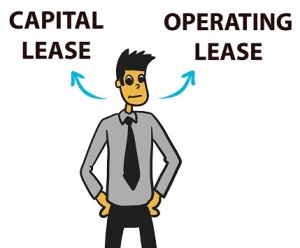 Let’s continue our discussion on equipment leasing. Last time, I gave a broad overview on the two major lease types, and then a bunch of leases that are commonly used.
Let’s continue our discussion on equipment leasing. Last time, I gave a broad overview on the two major lease types, and then a bunch of leases that are commonly used.
Today, we’ll look at the two major lease structures, and discuss the advantages of both:
Let’s start with a Capital Lease. A capital lease is where the company / lessee want the equipment to appear on the balance sheet as an asset, but also wants to spread out the payments. The equipment leased is considered part of the company’s assets (i.e., ”capital”, hence the name). In fact, on paper, the company gets to treat the equipment as if they own it in every way, including claiming depreciation.
At the end of a Capital Lease, there is usually a buyout that is well below market value (e.g., a $1 buyout, a 5% buyout, etc.) The company/lessee makes this last payment, and the equipment is officially theirs.
Obviously, a Capital Lease is used when a company is fairly certain they will want to keep the equipment at the end of the lease. You could almost say a Capital Lease is like a loan.
But what if the equipment is something they don’t want to keep? Or don’t want on their balance sheet? That’s where an Operating Lease comes in.
An Operating Lease is a lease where the company/lessee is essentially making payments on the portion of the equipment’s value they are going to use. In other words, the seller/lessor figures out a future value of the equipment based on the desired lease term (“assuming normal use, what will this equipment be worth in three / four / five years?”). In general terms, the lease payments are based on that future value minus the current selling price.
The advantages to a company here is the fact that they do not / will not own the equipment, but still get to use it now. And the lease payments are considered operating expenses on an income statement (hence the name), which is a tax advantage over slower depreciation. Plus, the equipment stays off the balance sheet (which many companies would prefer). You could almost say that in broad terms, an operating lease is like long-term renting.
At the end of an operating lease, the company/lessee can return the equipment, re-lease it, or buy it for a price to be agreed upon in the future at lease end. You see these types of leases on vehicles a lot.
There you have it – the two basic lease structures. We’ll get into the individual lease types in the future.

I have a question regarding ADP equipment and operating leases. In the past I thought most ADP equipment feel under the category of operating lease. However if you look at the useful life / value of most ADP equipment after say 5 years it is probably low. So that means in almost all cases you have used 75% or better of the assets value. How could that ever be classified as anything other than a capital lease??
Hello Scott. You’re correct. An ‘Operating Lease’ term is by definition short compared to the useful life of the equipment. To achieve any operating lease, the lender must assume the risk that the equipment will be worth an imputed $amount large enough to not lose money at the end of the lease term. One solution could be shorten the term from 5 years down to 3 years so the equipment retains more value at end of lease term – but equipment subject to rapid technical obsolescence is never a good candidate for an Operating Lease structure. In those cases, a “First Amendment” structure that requires the Lessee to either release the equipment or buy it for the stated value is the only method to achieve Operating Lease status for the initial lease term. Thanks. Fletch